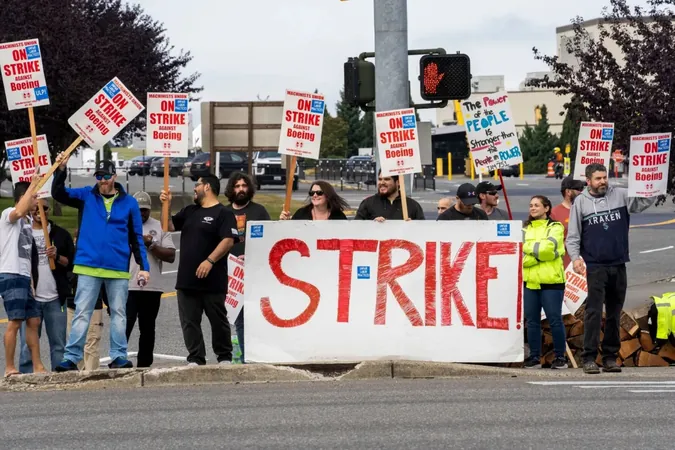
Boeing Workers Brace for Extended Strike Amid Gig Economy Options
2024-09-20
Introduction
As Boeing Co. faces a brewing labor dispute in Seattle, where its massive aircraft manufacturing hub is located, the situation is becoming increasingly tense for both the planemaker and its employees. The stakes have risen significantly as the company’s latest strike has led to the cessation of paychecks and health benefits for its striking employees starting September 30.
Union Dynamics and Gig Economy Impact
The International Association of Machinists (IAM) District 751 union has seen its 33,000 members leverage the current labor market dynamics amid their fight for better wages and benefits. The gig economy—a realm that has expanded dramatically since Boeing's last major strike 16 years ago—now provides workers with alternative income sources, potentially prolonging the standoff. This optimization allows employees to transition quickly into side jobs with companies like DoorDash and Uber, further complicating Boeing’s efforts to resolve this conflict swiftly.
Financial Implications for Boeing
As losses mount to an estimated $100 million daily, the pressure mounts on the company to come to a resolution. Notably, the union rejected a proposed 25% pay raise, signaling that members are willing to hold out for a more substantial agreement with demands for 40% pay raises and the reinstatement of pensions.
Workers' Preparedness and Current Conditions
Many workers, like Christopher Dahl, who has been with Boeing for over a decade, acknowledge the changing landscape of labor. With the current unemployment rate in Washington State at 4.9%, the availability of temporary work in sectors like construction and delivery means striking workers are equipped to sustain themselves for extended periods. Some employees, such as Luis Arteaga, have even planned financially for this strike, believing they can endure up to three months without regular Boeing pay.
Boeing's Response to the Strike
As the strike continues, Boeing is enacting robust cost-cutting measures, including travel restrictions for executives and plans to offer unpaid leave to employees across the board. In an effort to salvage its financial standing, the company is contemplating selling equity, which poses significant challenges given the urgency to maintain an investment-grade credit rating.
Broader Labor Issues
The striking workers are driven not only by financial concerns but also by a desire for dignity in the workplace. As Brian Bryant, the international president of IAM, emphasized, the current labor dispute reflects broader issues faced by workers across the United States, including stagnant wages and the erosion of pensions.
Political Attention and Historical Context
The Biden Administration has taken notice, inquiring about the situation to explore potential avenues for support and resolution between the parties involved. In the backdrop of this labor strife, historical sentiments from past contract negotiations remain vividly in the minds of workers, many of whom remember the long-standing impacts of agreements they believe were unfairly imposed on them in the aftermath of the 2008 strike.
Conclusion
In summary, as negotiations remain stalled and striking employees demonstrate a readiness to endure the challenges posed by a strike, the intricate dynamics of the current economy and workers’ solidarity could shape the outcome significantly. Boeing’s ability to navigate this critical juncture may determine not only the future of its workforce but also its market position in a highly competitive aerospace industry.


 Brasil (PT)
Brasil (PT)
 Canada (EN)
Canada (EN)
 Chile (ES)
Chile (ES)
 España (ES)
España (ES)
 France (FR)
France (FR)
 Hong Kong (EN)
Hong Kong (EN)
 Italia (IT)
Italia (IT)
 日本 (JA)
日本 (JA)
 Magyarország (HU)
Magyarország (HU)
 Norge (NO)
Norge (NO)
 Polska (PL)
Polska (PL)
 Schweiz (DE)
Schweiz (DE)
 Singapore (EN)
Singapore (EN)
 Sverige (SV)
Sverige (SV)
 Suomi (FI)
Suomi (FI)
 Türkiye (TR)
Türkiye (TR)